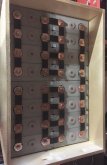Ian
OffGrid VanDweller
- Joined
- Jan 25, 2020
- Messages
- 63
So in a recent video Will Prowse recommended using a dc charger to charge up LiFepo4 batteries to 95%. Then to use a bench top DC power supply set at 3.6 V to top balance them. Once the current reaches 0 they are balanced.
I’ve been looking at chargers and bench top DC power supplys and am not sure what I should get. Can someone with experience recommend a specific charger and bench top dc power supply? I’m using 16 180ah calb cells. A quality budget option would be ideal.
I’ve been looking at chargers and bench top DC power supplys and am not sure what I should get. Can someone with experience recommend a specific charger and bench top dc power supply? I’m using 16 180ah calb cells. A quality budget option would be ideal.



